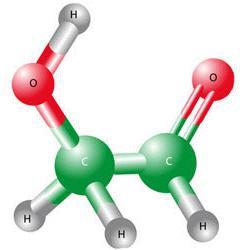|
Related Topics: |
|
|
|
Current News |
|
Chemistry A to Z |
|
About Internetchemistry |
Sweet molecule could lead us to alien life |
|
The discovery, part funded by the UK's Science and Technology Facilities Council (STFC), was published on the Astro-ph website [see below]. The international team of researchers, including a researcher at University College London (UCL), used the IRAM radio telescope in France to detect the molecule in a massive star forming region of space, some 26000 light years from Earth. |
|
Dr Serena Viti, one of the paper's authors from University College London, said, "This is an important discovery as it is the first time glycolaldehyde, a basic sugar, has been detected towards a star-forming region where planets that could potentially harbour life may exist." The molecule - glycolaldehyde - has previously only been detected towards the centre of our galaxy where conditions are extreme compared to the rest of the galaxy. This new discovery, in an area far from the galactic centre, also suggests that the production of this key ingredient for life could be common throughout the galaxy. This is good news in our search for alien life, as a wide spread of the molecule improves the chances of it existing along side other molecules vital to life and in regions where Earth-like planets may exist. The team were able to detect glycolaldehyde by using the telescope to observe the region with high-angular resolution and at different wavelengths. The observations confirmed the presence of three lines of glycolaldegyde towards the most central part of the core of the region. Glycolaldehyde, the simplest of the monosaccharide sugars, can react with the substance propenal to form ribose, a central constituent of Ribonucleic acid (RNA), thought to be the central molecule in the origin of life. Professor Keith Mason, Chief Executive of the Science and Technology Facilities Council (STFC), said, "The discovery of an organic sugar molecule in a star forming region of space is very exciting and will provide incredibly useful information in our search for alien life. Research like this, combined with the vast array of other astronomical projects involving UK researchers, is continually expanding our knowledge of the Universe and keeping the UK at the forefront of astronomy." |
|
|
|

